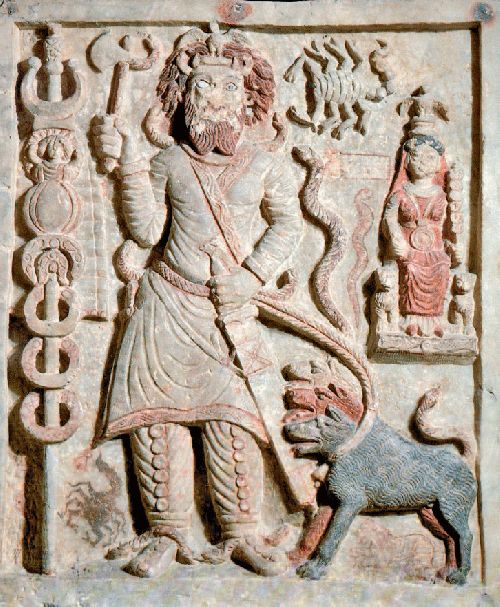Nergal
Ruling the underworld and wielding dominion over war and plague, he personified the darker aspects of existence. His very presence whispered of destruction, a stark counterpoint to the life-giving forces revered by other Mesopotamian gods. He was a reminder that life wasn’t a constant, gentle melody, but a song punctuated by the harsh chords of war, disease, and the inevitable return to the earth.

Residence: Kur (Mesopotamian underworld)
Symbols: Lion-headed mace, sword, lion, bull
Parents: Enlil and Ninlil
Siblings: Nanna, Ninazu, Enbilulu
Consort: Laṣ, Mammitum, Admu, Ereshkigal, Ninshubur
Children: Tadmushtum
Greek Equivalent: Hades
Roman Equivalent: Pluto
Nergal’s domain encompassed a horrifying duality: both death and disease. He was the embodiment of the harsh realities that stalked the people of Mesopotamia. Fevers, epidemics, and plagues – all fell under his purview, serving as constant reminders of mortality and the fragility of human life. A single misstep, a displeased deity, or the whim of fate could bring illness and suffering, and Nergal was the face that loomed over such misfortune.
He also held a prominent place as a god of war and destruction. He personified the brutal and relentless aspects of conflict, the embodiment of the violence and chaos that could erupt in a world fraught with power struggles and territorial disputes. When armies clashed, it was Nergal’s influence that fueled the savagery, the relentless pursuit of victory at any cost.

One of Nergal’s distinguishing attributes was his role as the ruler of the underworld, often referred to as the Kur. Here, the spirits of the deceased resided, and Nergal held authority over their fate. While some depictions portray him as a fearsome king, others suggest a more balanced role, ensuring order and a form of justice in the afterlife.
Nergal’s cult flourished particularly in the city of Cuthah. There, his temple, the E-shidlam, stood as a testament to his power. Within its walls, elaborate rituals associated with death and the afterlife were conducted. These practices aimed to appease Nergal, ensuring a peaceful passage for the deceased into his domain and honoring the ongoing influence of this complex and powerful deity in the lives of the Mesopotamians.

Despite his fearsome reputation, Nergal wasn’t without depth. In some myths, he exhibits qualities of resilience and courage, demonstrating a surprising capacity for transformation and renewal even in the face of adversity.
